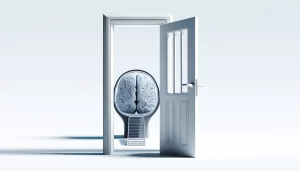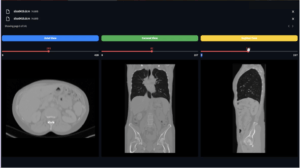From Detection to Diagnosis: The Impact of AI and Python on Medical Imaging
Introduction
Medical imaging technology has seen dramatic advancements over the years, with 2023 marking another year of significant progress. A key area of innovation is the integration of artificial intelligence (AI) and machine learning (ML) into imaging techniques, revolutionizing the way medical professionals diagnose and treat various conditions. This blog post will delve into how these advancements are reshaping the medical imaging landscape and the potential role of Python in driving these innovations.

The Rise of AI and ML in Medical Imaging
AI and ML algorithms are increasingly being employed in medical imaging, leading to more accurate diagnoses and improved patient outcomes. These algorithms can analyze medical images, identifying patterns and features that may be challenging for human radiologists to detect. This ability has the potential to detect conditions earlier, enhancing patient outcomes.
A prime example of this innovation is observed in Magnetic Resonance Imaging (MRI). In 2023, MRI technology has advanced to include faster scanning times, improved image resolution, and reduced radiation exposure for patients. New software and hardware advances, including the use of AI and ML algorithms, are allowing for faster and more detailed images to be produced. This ultimately improves the quality and accuracy of images, making MRI an invaluable tool in several medical specialties, including neurology, orthopedics, and oncology.
Python’s Role in Medical Imaging
Python, as a popular programming language in the realm of AI and ML, plays an instrumental role in the development of these innovative algorithms. Its simplicity, flexibility, and the wealth of libraries available make it a go-to language for developers in this field.
Libraries such as TensorFlow and PyTorch facilitate the building of neural networks for deep learning, which is particularly useful in enhancing the functionality of imaging techniques like MRI. By using Python, developers can create models that learn to identify complex patterns in imaging data, thereby improving the accuracy of diagnoses.
Case Study: CT Scanning
Computed Tomography (CT) scanning is another area where AI and ML have had a significant impact. One of the major advancements in CT scanning technology is the use of dual-energy CT (DECT) scanning. DECT scanning uses two different X-ray energies to create images that highlight different tissue types. This allows doctors to differentiate between healthy tissue and diseased tissue, potentially improving the accuracy of diagnoses and treatment planning.
Python libraries such as PyDicom can be used to read, modify and write DICOM files, which are commonly used in CT scans. Using ML models, Python can assist in analyzing these images, identifying anomalies, and distinguishing between different tissue types.
The Future of Medical Imaging with AI, ML, and Python
As we look toward the future, the role of AI, ML, and Python in medical imaging is set to grow. With continued innovation and investment, we can expect to see even more advancements. These will undoubtedly lead to better patient outcomes, enhanced quality of care, and, ultimately, the improvement of public health on a global scale.
Conclusion
The integration of AI and ML in medical imaging has undeniably revolutionized the field. As Python continues to be a powerful tool in developing these technologies, it remains at the forefront of this transformation. As we continue into 2023 and beyond, the ongoing advancements in medical imaging technology promise a future of improved diagnostics, patient care, and global health outcomes.
Our Services
At PYCAD, we’re not just spectators in the world of medical imaging technology — we’re active participants. We have a dedicated team of experts who work tirelessly to leverage the power of deep learning models for medical imaging. We provide solutions for image classification, object detection, and image segmentation to transform raw data into valuable insights.
We’ve been fortunate to work with many clients and deliver tailored solutions to fit their needs. Here are a few examples:
- We’ve helped VELMENI develop the majority of their AI models for dentist imagery analysis (tooth numbering, pathology detection, and more). You can learn more about their work here.
- We’ve built a text recognition system for GDPicture, which you can learn more about here.
- We’ve also developed some innovative projects that use ChatGPT and Large Language Models (LLMs). This includes MonaiGPT, a web app that can help software developers query MONAI documentation and get their questions answered quickly, and Remchee, a Chrome extension that allows users to use ChatGPT directly from their browsers.
Our team believes in the transformative power of artificial intelligence and its ability to revolutionize healthcare diagnostics and treatment planning. We are committed to pushing the boundaries of what’s possible in medical imaging, and we’re excited to help our clients do the same.
In addition to our professional services, we also believe in the importance of education and sharing knowledge. Our team has created several online courses to help others learn about machine learning tools and deep learning frameworks, such as MONAI and Tensorflow. You can find these courses on the FreeCodeCamp YouTube channel:
To learn more about our work and services, feel free to visit our website.
If you’re interested in harnessing the power of AI for your medical imaging needs, we would love to hear from you. Please feel free to reach out to Mohammed at mohammed@pycad.co or Nour Islam at nourislam@pycad.co. We’d be delighted to schedule a call and discuss your project in more detail. Together, we can make a real difference in the field of healthcare.



